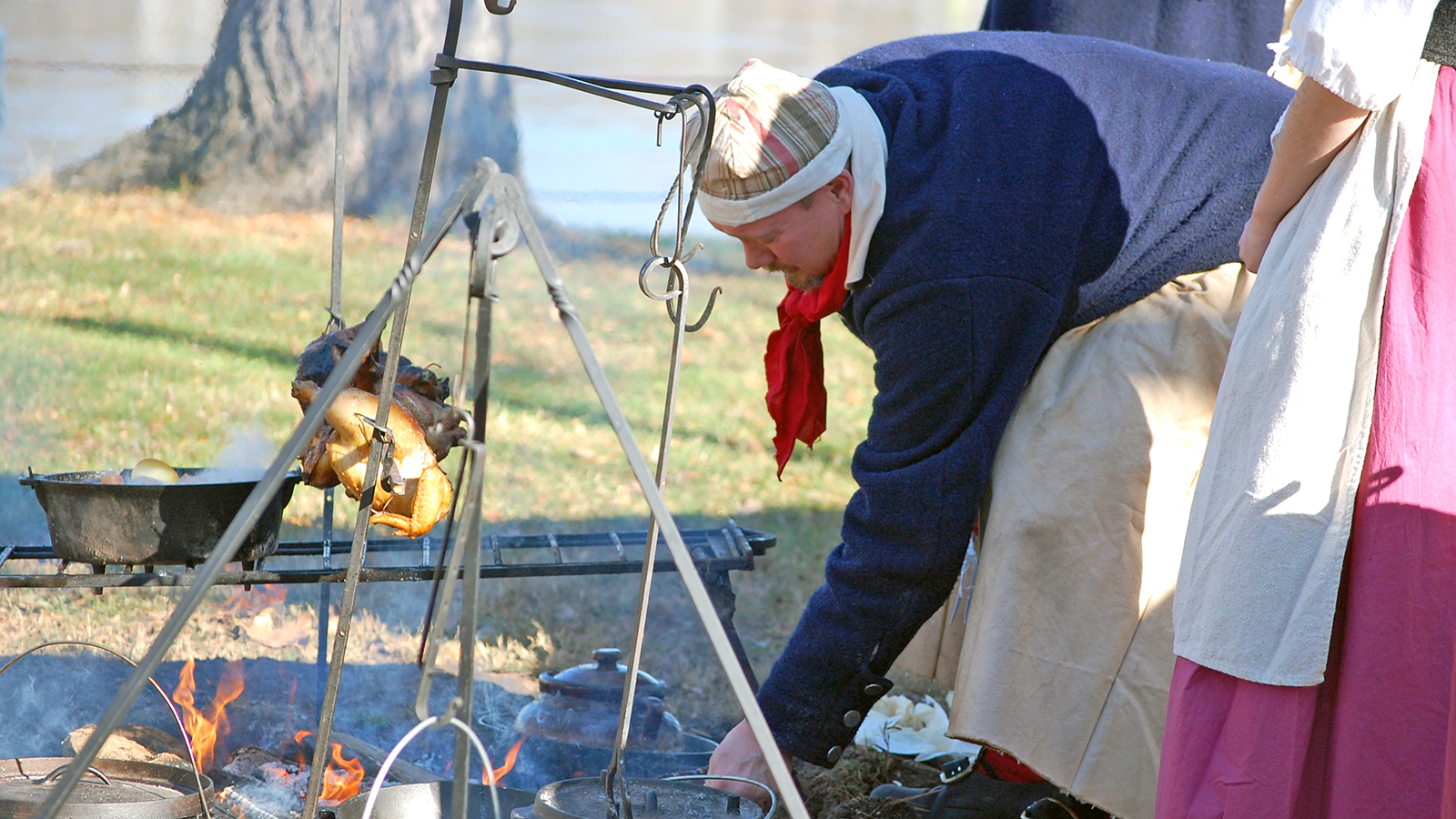
While there was a system in place for feeding the Continental Army, museum curator Kimberly McCarty says that it was plagued by trouble throughout the war. “Which is why you hear so many stories about hungry soldiers,” she says.
The Commissary Department responsible for supplying food and equipment. Because the Continental Army was established with the Revolutionary War, the Commissary Department was also new. In many ways, it resembled the British Army’s system for distributing provisions. That wasn’t a coincidence, according to McCarty.
“A lot of the Continental Army’s officers served with the British Army previously,” she says. “If it worked, why wouldn’t you try to adopt it? But it was just so new. There were bound to be issues even under the best of circumstances.”
When challenges arose, as they frequently did, contingency plans were too long in the making, which often left George Washington’s troops with fractions of their daily provisions and rotten food that was inedible.
The system’s novelty also made it vulnerable being taken advantage of. Perhaps the most notable offender was a man named Carpenter Wharton. An excerpt from David Hackett Fischer’s book, Washington’s Crossing:
The weakest link in this very long chain was the distribution system in Pennsylvania, which fell into the hands of Carpenter Wharton, a corrupt and incompetent businessman who volunteered to supply Continental troops in the middle states as deputy commissary general. Wharton ran his office as a private business for the benefit of a small circle of cronies. Complaints were rife that he overcharged Congress, undersupplied the army, and turned a profit in between.
As a result, soldiers often foraged for their own food near their encampments. This included both hunting small animals, like squirrels, and searching for edible plants as well as knocking on the doors of nearby homes and asking if they had any food to spare, according to Connie Unangst, the park’s museum shop coordinator and an expert in colonial era cooking.
“Usually, they paid for it,” McCarty says. “But sometimes they didn’t.”
Camp followers – the wives of some of the soldiers who followed the troops wherever they went – occasionally helped with the cooking. But their primary responsibilities were the laundry and caring for their sick or wounded husbands, according to McCarty.
Each company of five to eight soldiers typically named a cook, and that person was responsible feeding the entire unit. Given the meager rations and the frustration and anger that grew around them, it’s safe to say that cook was not an enviable position.
Every soldier was given something called a camp kettle, which they were responsible for hauling around with the rest of their gear. Their smaller size made them more travel-friendly, at least, than the larger and heavier kettles that many cooked with in their homes at the time. Their only other cooking (and eating) utensils, Unangst says, were an axe and maybe a fork or two.

